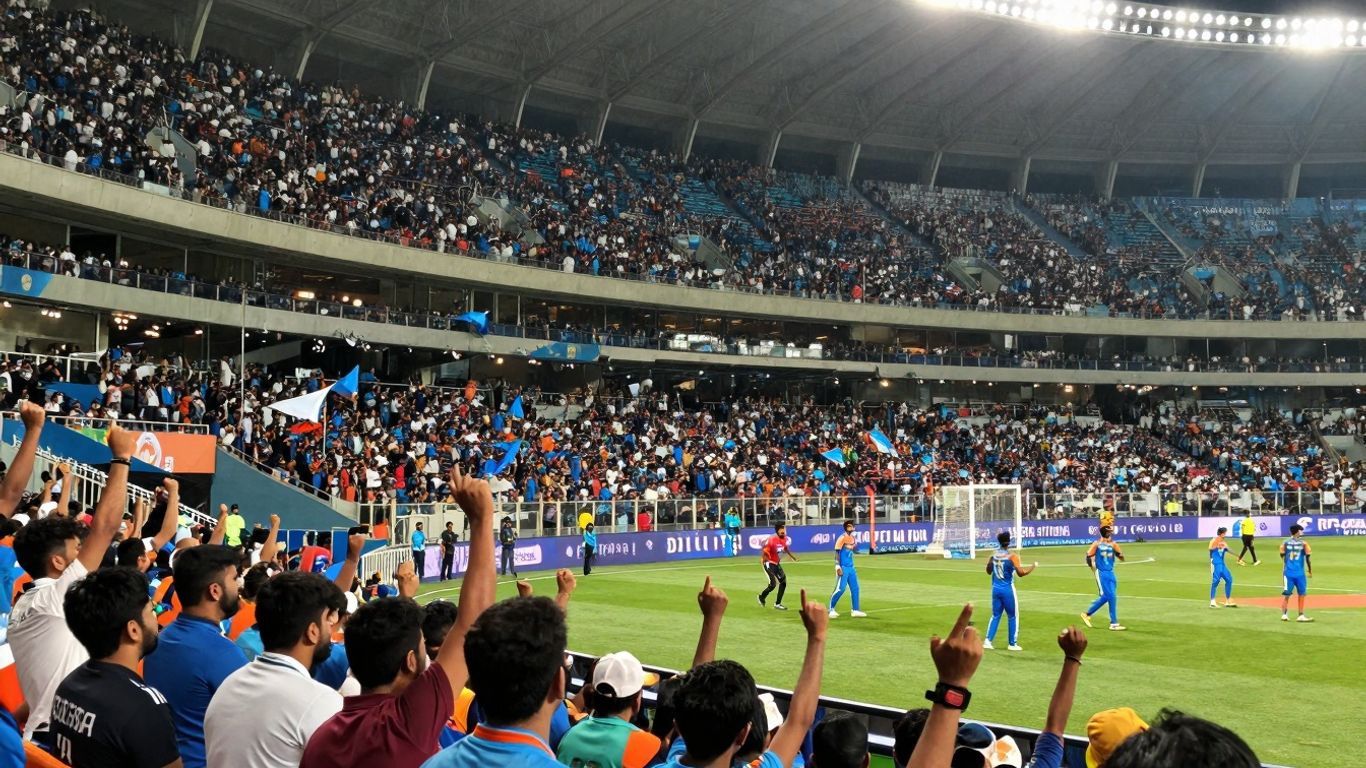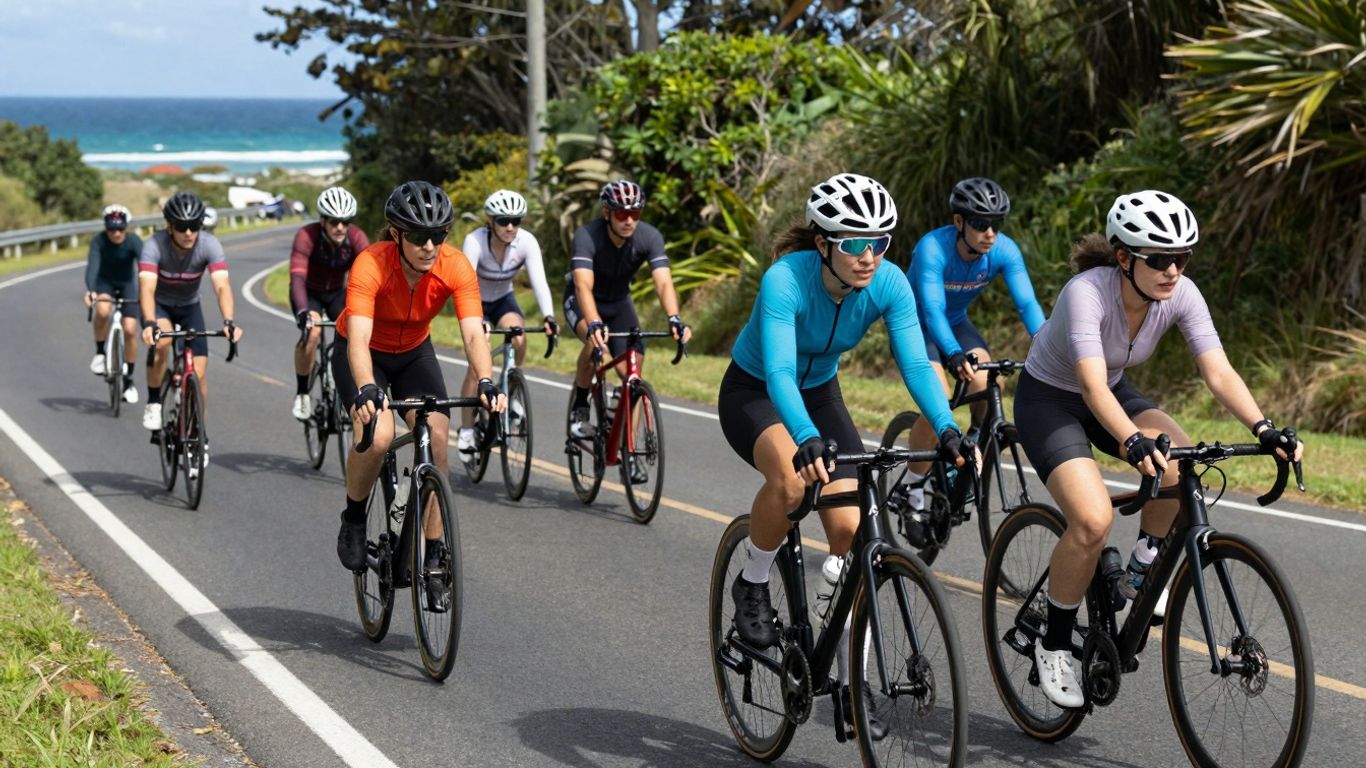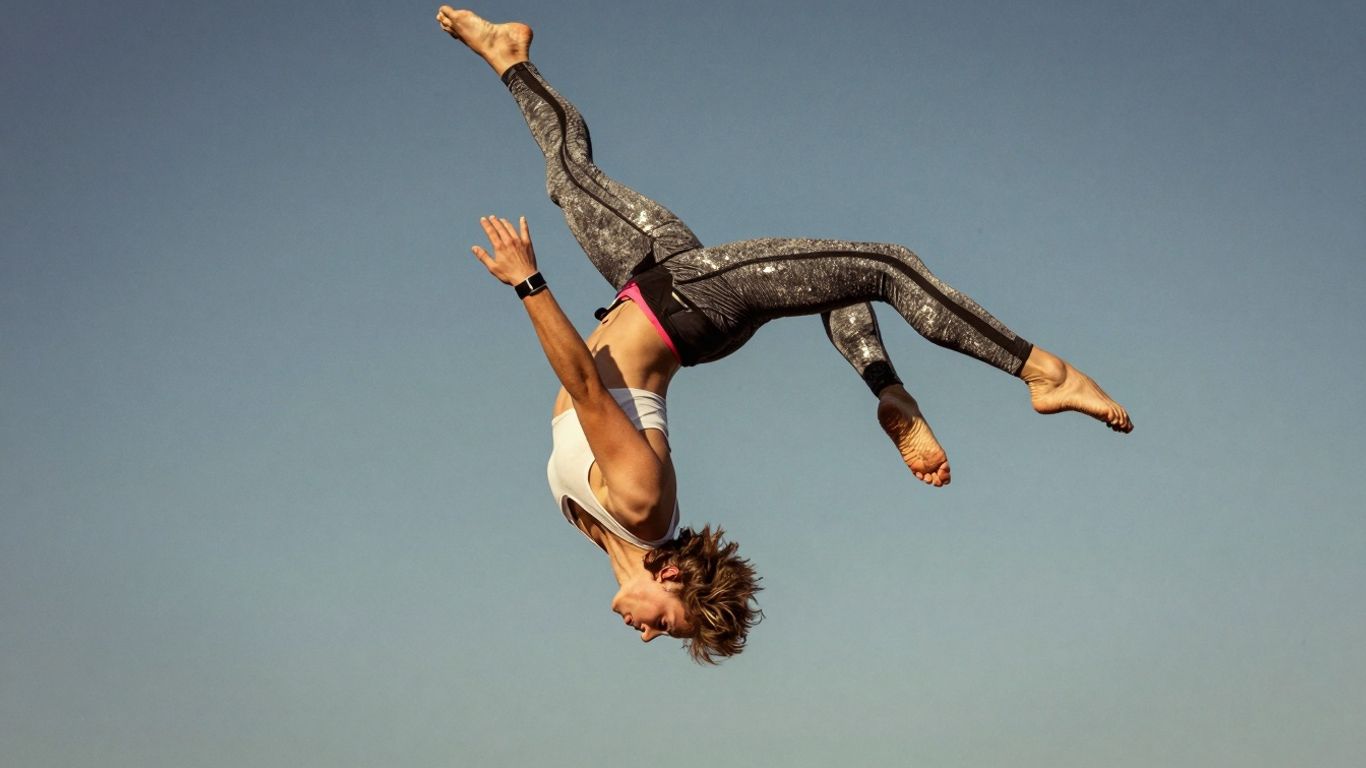Choosing the right soccer ball size is crucial for players of all ages. Whether you’re just starting out or you’re a seasoned pro, using the appropriate size ball can significantly impact your performance and enjoyment of the game. This guide will help you understand the different sizes available and how to select the best fit for your needs.
Key Takeaways
- Soccer balls come in various sizes, each suited for different age groups and skill levels.
- Using the correct soccer ball size enhances skill development and reduces the risk of injury.
- Training balls are typically more durable, while match balls are designed for optimal performance.
- Specialised soccer balls exist for different types of play, such as futsal and beach soccer.
- FIFA has specific standards for soccer ball sizes, ensuring consistency in quality for matches.
Understanding Soccer Ball Size Variations
It’s easy to think all soccer balls are created equal, but that’s far from the truth. The size of the ball can significantly impact a player’s development and enjoyment of the game. Choosing the correct size is important for skill development and injury prevention. Let’s break down the different types and why size matters.
Different Types of Soccer Balls
Soccer balls aren’t just round things you kick. There’s a whole range designed for different purposes and age groups. You’ve got your standard match soccer balls, training balls, futsal balls, indoor soccer balls, and even beach soccer balls. Each one has unique characteristics that make it suitable for its intended use. For example, futsal balls are smaller and have less bounce, which is perfect for the fast-paced indoor game. Beach soccer balls are lighter and softer, making them easier to control when playing barefoot on sand. It’s not just about grabbing any old ball; it’s about picking the right tool for the job.
Importance of Size in Performance
The size of the soccer ball directly affects a player’s ability to control, pass, and shoot. A ball that’s too big can be difficult for younger players to handle, leading to frustration and poor technique. On the other hand, a ball that’s too small might not provide enough resistance for older players to develop their power and accuracy. Using the correct soccer ball size guide ensures players can develop proper technique and confidence. It’s about finding that sweet spot where the ball feels comfortable and responsive, allowing players to focus on their skills rather than struggling with the equipment.
Common Misconceptions About Size
There are a few common myths floating around about soccer ball sizes. One is that bigger is always better, which simply isn’t true. Another is that any old ball will do for training, which can hinder skill development. Some people think that the size doesn’t really matter all that much, but it really does. Using the wrong size can lead to bad habits and even injuries. It’s important to understand the guidelines and choose the right ball for the player’s age, skill level, and the type of game being played.
It’s easy to assume that a soccer ball is just a soccer ball, but the reality is that the size and type can have a big impact on a player’s development and enjoyment of the game. Choosing the right ball is about more than just convenience; it’s about setting players up for success and helping them reach their full potential.
Soccer Ball Size Recommendations by Age

It’s super important to get the right size soccer ball for a player’s age. Using the correct size helps with skill development and can even prevent injuries. Plus, it just makes the game more enjoyable! Let’s break down the recommendations.
Guidelines for Young Players
For the littlest tackers, we’re talking about size 3 balls. These are perfect for kids aged 8 and under. They’re smaller and lighter, making them easier to control. This helps build confidence and fundamental skills.
- Size 1 (Mini): Great for skills training, all ages.
- Size 2: Often used by players aged 3-5.
- Size 3: Recommended for players 8 years and under.
Starting with the right size ball is like building a house on a solid foundation. It sets young players up for success and helps them develop a love for the game.
Transitioning Between Sizes
As players get older, they need to move up in size. Around age 9-11, it’s time to switch to a size 4 ball. This is a good middle ground before moving to the full-size ball. Size 4 soccer balls are ideal for this age group.
| Size | Age |
|---|---|
| Size 3 | Under 8 |
| Size 4 | 9-11 |
| Size 5 | 12+ |
Age-Specific Training Tips
When training young players, focus on ball control and dribbling. Smaller balls can actually help improve these skills. For older players, work on passing accuracy and shooting power. Using the correct size backyard soccer ball will help them transfer techniques into games.
Choosing the Right Soccer Ball for Training
Training vs Match Balls
When it comes to training, you don’t always need to use the same fancy match balls that you would use in a game. Training balls are built to last. They can handle being kicked around on all sorts of surfaces, day after day. Match balls, on the other hand, are designed for optimal performance and usually adhere to strict regulations. Using training balls for practise saves your match balls from wear and tear, and your wallet from unnecessary expenses.
Durability Considerations
Think about where you’ll be training. Is it a pristine grass pitch, or a rough, gravelly park? For tougher surfaces, you’ll want a ball with a durable outer layer. Look for balls made with thicker materials and reinforced stitching. Some training balls even have special coatings to resist abrasion. A more durable ball will obviously last longer, saving you money in the long run. No one wants to be replacing balls every few weeks!
Skill Development with Size
Believe it or not, the size of the ball can actually help with skill development. Using a smaller ball, for example, can improve close control and footwork. Mini soccer balls are great for this. They force you to be more precise with your touches. On the other hand, training with a slightly heavier ball can build strength and power in your kicks. It’s all about finding the right balance and using the right tool for the job. Don’t be afraid to experiment with different sizes and weights to see what works best for you.
Choosing the right soccer ball for training is important. It’s not just about having something to kick around. It’s about using the right equipment to improve your skills, protect your investment, and get the most out of your training sessions. Think about durability, playing surface, and the specific skills you want to develop. A little bit of thought can go a long way.
Specialised Soccer Ball Types

Futsal Balls and Their Characteristics
Futsal balls are specifically designed for the fast-paced, indoor game of futsal. The key characteristic of a futsal ball is its reduced bounce, making it easier to control on hard surfaces. They’re typically size 4, which is slightly smaller than a standard size 5 soccer ball. This smaller size, combined with the low bounce, promotes closer ball control and quicker passing, essential elements of futsal. Futsal balls are heavier than regular soccer balls, further contributing to their dampened bounce. If you’re looking to improve your close control, using futsal balls can be a great training aid, even if you primarily play outdoor soccer.
Indoor Soccer Ball Features
Indoor soccer balls share some similarities with futsal balls but have their own unique features. Like futsal balls, they often have a reduced bounce to suit indoor play. However, some indoor soccer balls may feature a felt or suede casing for a softer feel, which can be beneficial when playing on very hard indoor surfaces. They usually come in sizes 4 or 5. The softer cover helps to reduce the impact on players’ feet and joints, making them more comfortable to use during extended play. The reduced bounce helps keep the ball on the ground, promoting passing and teamwork.
Beach Soccer Ball Specifications
Beach soccer balls are designed for barefoot play on sand. They are typically size 5, like standard soccer balls, but are lighter and softer. The lighter weight makes it easier to control the ball in the air, which is a common feature of beach soccer. The softer construction reduces the impact on players’ feet when kicking barefoot. Beach soccer balls are often brightly coloured for better visibility in sunny conditions. If you’re planning a kick-about on the sand, make sure you’ve got the right soccer ball size for the job.
Choosing the right specialised soccer ball can significantly improve your performance and enjoyment of the game. Whether it’s the low bounce of a futsal ball, the soft touch of an indoor soccer ball, or the lightweight feel of a beach soccer ball, each type is designed to meet the specific demands of its playing environment.
Factors Influencing Soccer Ball Size Selection
Player Age and Skill Level
Okay, so picking the right soccer ball isn’t just about grabbing the first one you see. It really comes down to who’s kicking it and how good they are. For the little tackers just starting out, you want something smaller and lighter. It’s easier for them to control and doesn’t hurt as much when they accidentally kick their toes (we’ve all been there!). As they get older and more skilled, you gradually increase the size. This helps them develop proper technique and strength without being overwhelmed by a ball that’s too big or heavy. Think of it like learning to ride a bike – you start with training wheels and then move on to the real deal.
Playing Surface Considerations
Where you’re playing makes a big difference too. A size 5 ball might be perfect for a well-maintained grass pitch, but it could be a nightmare on a hard, uneven surface. For indoor soccer or futsal, you need a special ball that’s smaller and has less bounce. Beach soccer? That’s a whole different ball game (pun intended!), requiring a softer ball that’s easier to control in the sand. The surface impacts how the ball moves and how easy it is to control, so choose wisely. You might want to consider kids soccer balls if you are playing on a hard surface, as they are lighter and easier to control.
Personal Preference and Comfort
At the end of the day, a lot of it comes down to what feels right for the player. Some players might prefer a slightly smaller ball because they feel like they have more control, while others might like a bigger ball because they can get more power behind their shots. It’s all about finding that sweet spot where the ball feels like an extension of their foot. Don’t be afraid to experiment with different sizes and weights to see what works best. It’s like finding the perfect pair of boots – it’s a personal thing.
It’s worth remembering that comfort and confidence are key. A player who feels comfortable with their ball is more likely to perform better and enjoy the game more. So, let them have a say in the selection process. After all, they’re the ones who’ll be spending the most time with it.
Here’s a quick rundown:
- Younger players: Smaller, lighter balls for easier control.
- Indoor/Futsal: Smaller, low-bounce balls.
- Beach Soccer: Softer balls designed for sand.
- Grass Pitches: Standard size balls (size 4 or 5 depending on age).
The Role of Soccer Ball Size in Injury Prevention
Impact of Size on Player Safety
Using the wrong size soccer ball can actually increase the risk of injuries, especially for younger players. A ball that’s too heavy can strain muscles and joints, leading to overuse injuries or even acute injuries like sprains. Think about it – kicking a ball that’s too big requires more force, which puts extra stress on the body. On the flip side, a ball that’s too small might encourage poor kicking technique, which can also lead to problems down the track. It’s all about finding that sweet spot where players can develop their skills without putting themselves at risk.
Proper Size for Skill Development
Using the right size ball isn’t just about avoiding injuries; it’s also about developing proper technique. When players use a ball that’s appropriate for their age and size, they’re more likely to develop good habits and skills. For example, a smaller ball can help young players improve their ball control and footwork, while a larger ball can help older players develop their kicking power and accuracy. It’s all about matching the ball to the player’s developmental stage.
Here’s a quick rundown:
- Size 3: Great for developing fundamental skills in younger kids.
- Size 4: Helps with transitioning to more advanced techniques.
- Size 5: Allows for power and precision development in older players.
Coaching Recommendations
Coaches play a big role in making sure players are using the right size soccer ball. It’s not just about grabbing any old ball from the equipment room; it’s about making a conscious decision based on the players’ age, skill level, and physical development. Coaches should also be aware of the potential risks associated with using the wrong size ball and take steps to prevent injuries. This might involve providing players with access to different size balls, teaching them proper kicking technique, and monitoring their progress to make sure they’re not overdoing it. Also, coaches should consider the Nike soccer cleats that players are using, as this can also impact performance and injury risk.
It’s important for coaches to communicate with parents and players about the importance of using the right size soccer ball. This can help to create a culture of safety and prevent injuries from occurring in the first place. By working together, coaches, parents, and players can ensure that everyone is having a safe and enjoyable experience on the field.
Understanding FIFA Soccer Ball Size Standards
FIFA Quality Pro Balls
When you’re talking top-tier soccer, FIFA has some pretty strict rules about the balls used. The FIFA Quality Pro label is the gold standard. These balls have gone through a heap of testing to make sure they meet specific criteria for weight, size, shape retention, and water absorption. Only the best get this badge, so if you see it, you know you’re dealing with a high-quality match ball. It’s a mark of quality used in professional leagues and tournaments around the world.
Regulations for Match Play
FIFA regulations are pretty clear when it comes to match play. Size 5 balls are the standard for adult matches, and there are specific weight and circumference requirements. These rules are in place to ensure fair play and consistent performance. Using a ball that doesn’t meet these standards could lead to some serious issues during a game. Think about it – a ball that’s too light or too heavy could affect players’ shots and passes, throwing off the whole match.
Differences in Training Standards
While match balls need to meet those strict FIFA Quality Pro standards, training balls have a bit more leeway. They still need to be a decent size and weight, but the focus is more on durability and cost-effectiveness. Training balls are designed to withstand a lot of use on different surfaces, so they’re often made with tougher materials. You might find that training balls don’t have the same perfect roundness or consistent bounce as a match ball, but they’re perfect for everyday practise. If you’re looking for FIFA approved soccer balls, make sure to check the label.
It’s important to remember that even though training balls don’t need to meet the exact same standards as match balls, they should still be of good quality. Using cheap, poorly made balls can actually hinder player development and increase the risk of injury. So, it’s worth investing in decent training equipment.
Here’s a quick rundown:
- Match Balls: Highest quality, FIFA approved, used in official games.
- Training Balls: More durable, suitable for practise, less expensive.
- Futsal Balls: Smaller, low bounce, for indoor soccer.
Wrapping It Up
So, there you have it. Picking the right soccer ball size isn’t just about grabbing whatever looks good. It’s about matching the ball to the player’s age and skill level. Whether you’re a parent buying for your kid or a player looking for your own gear, knowing the sizes can really make a difference. It helps with skill development and keeps the game fun. Remember, a size 5 ball is for the older teens and adults, while the little ones need something smaller to kick around. So, next time you’re out shopping, keep this guide in mind and choose wisely!
Frequently Asked Questions
What size soccer ball should kids use?
Kids aged 3-5 should use a size 2 ball, while those under 3 can use a size 1 ball.
How do I know when to change ball sizes?
Players usually switch sizes when they reach certain age groups, like moving from size 3 to size 4 at age 10.
What’s the difference between training and match balls?
Training balls are made for practise and are more durable, while match balls are designed for official games.
Are there special soccer balls for indoor play?
Yes, indoor soccer balls are typically size 4 or 5 but have less bounce for better control.
Can using the wrong size ball cause injuries?
Yes, using the wrong size can lead to injuries and affect skill development.
What are FIFA’s standards for soccer ball sizes?
FIFA has specific size and quality guidelines for match balls to ensure fair play.





